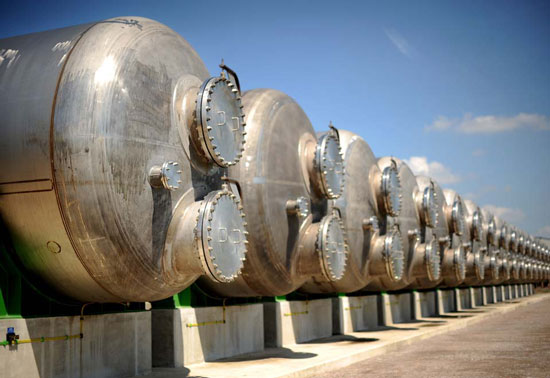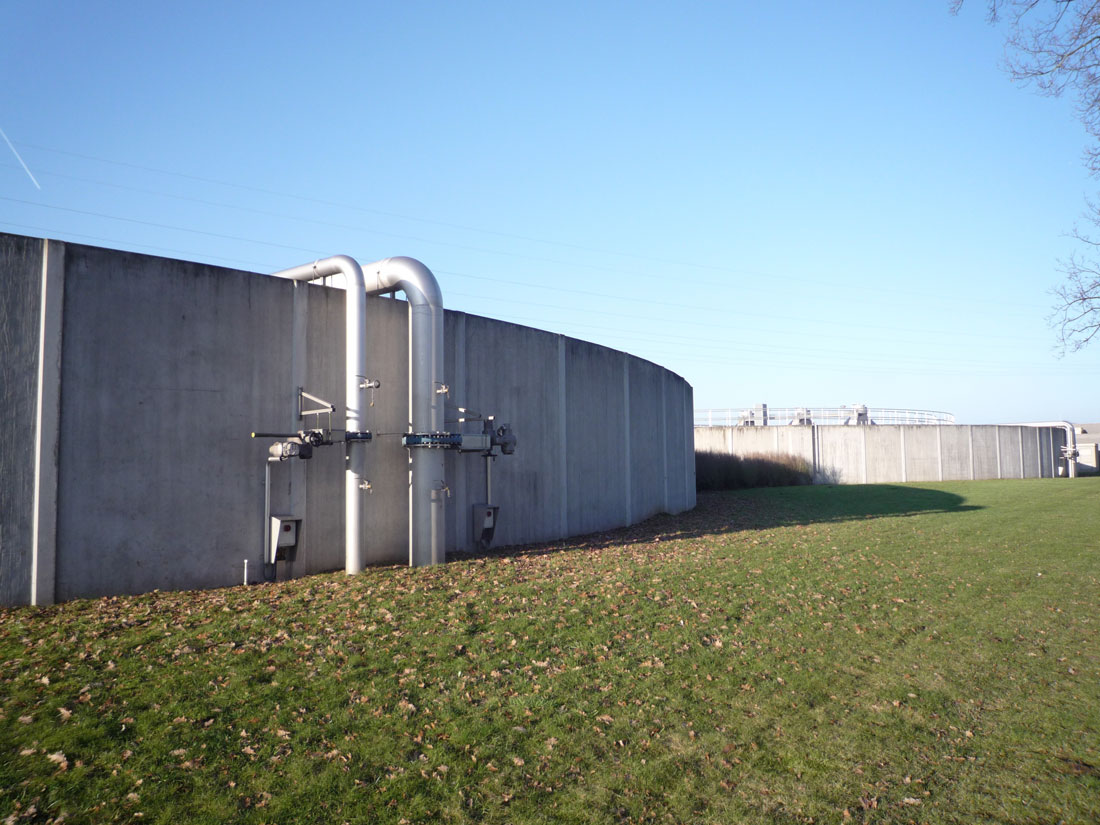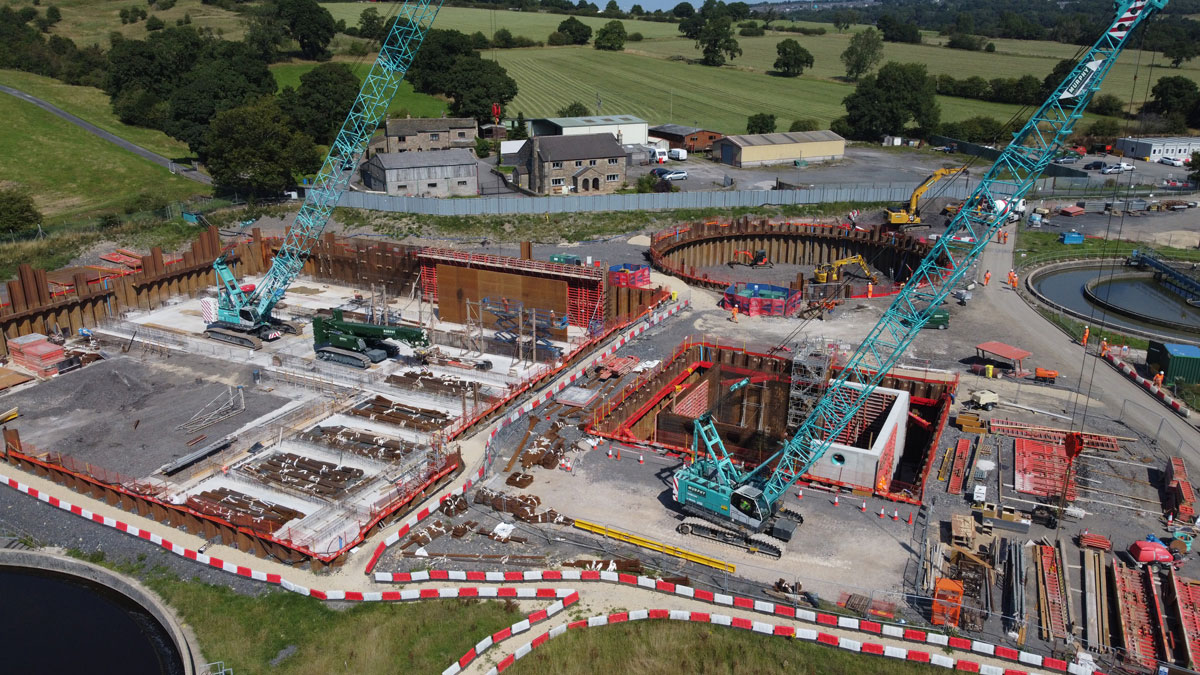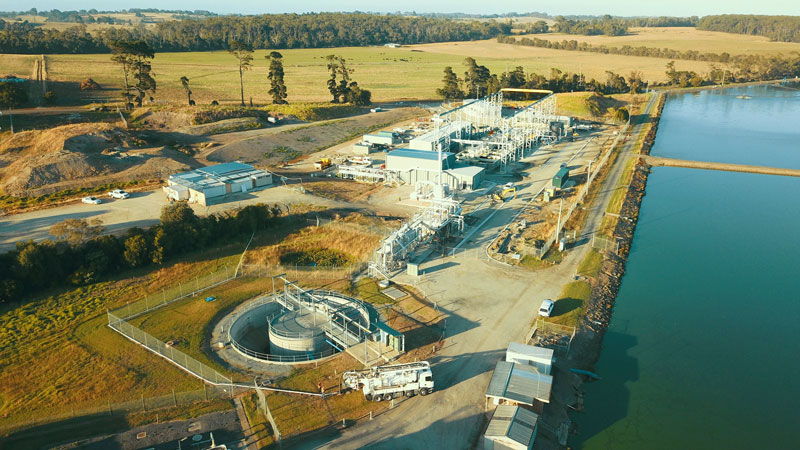The Drouin wastewater treatment plant in Victoria, Australia. Photo: Gippsland Water.
The violent contrasts between dry and wet weather of recent months have laid bare the urgent need to build, maintain and upgrade water management infrastructure. Valves and actuators are vital to achieve that goal.
By James Chater
Scarcity
In 2009, I wrote: “We are failing to manage our global water resources. This is not because of a lack of water as such. Rather, it is because rising populations and expanding economies on the one hand and environmental degradation (much of it due to global warming) and lack of investment on the other are placing intolerable pressure on water resources.” (1) Today, 13 years later, I would not change a word. The two interconnected problems remain: water scarcity caused by inefficient handling of the resource and by climate chaos, and inadequate wastewater treatment systems.
It is not for lack of initiatives and projects. The problem is that global warming has gotten worse at a faster rate than the steps being taken to tackle the problems. The extreme heat and drought of this summer, fol-lowed by the devastating floods in Pakistan, are symptoms of this. After a prolonged drought, the earth is unable to absorb rain, so there are run-offs and flash floods once the rain begins. In poorer countries, waste-water is not being treated properly, and poor sanitation is causing the deaths of 800 children a day (2).
Unsurprisingly, the worst droughts occur in northern Africa and the Middle East, but the situation in Greece and Spain is equally alarming (see map). Among industrial countries, the USA, China and India are also major drought regions, which could affect the global economy. Apart from drinking, water is essential to industry, agriculture and power generation. Its absence is felt in countries that rely on water-cooled nuclear reactors to generate electricity.

Remedies
What can be done? There are at least five overlapping areas where measures are being taken: (1) recycling; (2) savings and economies of both water and power; (3) expand and update wastewater treatment; (4) improve the quality and quantity of drinking water; (5) improve flood management.
1. Recycling
Recycling is a natural process (rain, run-off, evaporation, cloud formation, rain, etc.) that has been disrupted by climate change. Because of this disruption and population pressures, it has become necessary to create shorter recycling processes and “closed loops” wherever possible.
The scope for recycling is considerable, as several applications do not require water of drinking quality. This “grey” water can serve for irrigation, e.g., watering, street cleaning, car washing or industry. But it is possible to go further, treating used water for drinking purposes. This already happens in the world’s driest regions, notably Israel, which recycles 90% of its water. Now Spain and France are following suit. Veolia is currently installing waste-water recycling units at all its sewage treatment plants in France. Its Jourdain recycling project will soon secure supplies of drinking water for the Vendée’s inhabit-ants. In Milan, Rotork actuators have been installed on jet valves at a plant that recycles wastewater for irrigation. These actuators control the air inlet in the oxidation tanks, regulating the air flow that supports micro-organisms.
Recycling also works within buildings: by collecting rainwater and recycling wastewa-ter in a closed circuit, waste can be greatly reduced. Such closed loops are being installed in a Nestlé factory in Mexico and the Pearl gas-to-liquid complex operated by Shell in Qatar.
Brexit and sewage
The UK’s sewage problem has literally raised quite a stink. Beaches and rivers have been polluted to an extent rarely seen in advanced industrial countries. This occurred after the UK government relaxed the rules governing discharge of wastewater into the environment. Com-panies are now allowed to discharge water that has been only partially treated. The rules were part of the UK’s obliga-tions under EU law, which since Brexit no longer apply. The crux of the problem is that certain chemicals required in wastewater treatment are in short supply. One of these is ferric sulphate, an acid that removes phosphorus and prevents the growth of algae. The reason for the shortages is that HGV drivers are increasingly reluctant to drive between the UK and the EU because of the red tape that exists as a consequence of the UK leaving the EU.
Valves in desalination

Valves in water service are often used in conjunction with pumps. Whereas pumps generate flow, valves control that flow. The most demanding applications for valves and pumps occur in desalination. Both must be resistant to the most aggressive saline media, so duplex and superduplex grades are often used on pump impellers. Apart from corrosion, criteria of selection include resistance to fast flow and cavitation, ease of inspection and maintenance, and the ability to service the valves in-line to reduce downtime. Although carbon steel, copper-nickel and nickel aluminium bronze are often used on valves, stainless steel is preferred for the brine discharge process in RO desalination plants.
2. Economies and maintenance
Throughout the world, an alarming amount of water is lost each day because of leaks. Corrosion resistant stainless steel and leak-free valves are essential in the battle against this waste. But it is not only water that needs to be saved. Water management is energy-intense, mainly because of the pumps required. Compres-sion exchangers can save a great deal of energy by recovering heat from brine in seawater RO desalination facilities. Cumwhinton, near Carlisle in the UK, is the first treatment plant to install UV LED reactors to reduce energy costs. Water companies are harnessing solar power and other renewable energy types to run their plants. Veolia and TotalEnergies have partnered to build a large solar-power system for a desalination plant in Oman. Correct valves operation is also crucial in reducing water loss. Denmark’s Strømmen Water Utility installed VIDI positioners on eight strategic valves to allow instantaneous information on valve position and operation.
3. Wastewater treatment
Over the world, urbanization and increas-ing population are driving wastewater treatment projects. Even in the UK, despite the negative news about sewage discharges (see box), a number of upgrades of sewage plants have recently been carried out. At Bicester a predicted increase in population induced Thames Water to build an activated sludge plant and filter beds. At Burnley the wastewater works has been refurbished, including a detention tank and pumps, primary settlement tank, activated sludge plant, power upgrade and more.
A recent project in Australia was the expansion of Gippsland Water’s Drouin Wastewater Treatment Plant in Victoria, Australia. This included a new membrane bioreactor, aeration systems, activated sludge dewatering, chemical dosing and odour treatment. The aim was to deliver an energy-efficient plant with low maintenance and life-cycle costs. Designed by KBR, the project used Limitorque QX series actuators fitted to AVFI Pty Ltd butterfly valves.

Water and energy
Apart from being essential to sustain life, water can be harnessed to pro-duce energy. Hydro power is the most obvious example of this, but there are others. As part of the renovations to the Afsluitdijk flood barrier in the Netherlands, a system is being installed that can generate electricity through the convergence of saltwater and fresh-water (osmotic power). Scientists are also researching ways of harnessing the kinetic energy of raindrops to produce electricity. This can be tapped using certain materials with piezoelectric properties (that generate electricity in response to applied mechanical stress).

4. Drinking water
Apart from recycling, a good way to conserve drinking water is by upgrading facilities to make them smarter, able to react to changing conditions in real time. Here, valves play a crucial role For Wessex Water’s upgrade of its Durleigh facility in the UK, Rotork supplied 200 IQ multi-turn and part-turn operated actuated valves on almost all processes. The IQ3 actuators operate on a Profibus control network that provides control and feedback data. Rotork IQ3 actuators were also installed at a Jersey (Channel Island) water treatment plant. There they control the flow of water as it is being chemically treated and operate penstocks to control water flow to the filter beds.
In the dry countries that can afford it, desalination, which is expected to grow in revenue by 9.32% from 2021-6, will be a fast-growing source of drinking water. Some very large plants are being built in the Middle East, especially on the Arabic peninsular, with a variety of duplex stainless steels being applied to resist the saline conditions.
5. Flood control
An increasingly important element of water management, especially in urban areas where built-up surfaces prevent run-off, is flood control. The installations can be sophisticated, as in Glasgow’s Smart Canal, a dynamically managed system that accepts stormwater run-off via three discharge locations controlled by actuated sluice valves and controls discharge flow into a nearby river. One of the largest of such systems is the recently completed Dubai Deep Tunnel System, which caters for 40% of the urban area. It comprises a ground water and stormwater collection network, a 10km-long deep tunnel, a holding pond, a pumping station, and a sea outfall.

Reference
(1) Stainless Steel World, January/February 2009.
(2) https://www.oxfam.org/en/what-we-do/issues/water-and-sanitation
About this Featured Story
This Featured Story is an article from our Valve World Magazine November 2022 issue. To read other featured stories and many more articles, subscribe to our print magazine. Available in both print and digital formats. DIGITAL MAGAZINE SUBSCRIPTIONS ARE NOW FREE.
“Every week we share a new Featured Story with our Valve World community. Join us and let’s share your Featured Story on Valve World online and in print.”



